Gradient boosting machines
Supervised Learning in R: Regression

Nina Zumel and John Mount
Win-Vector, LLC
How Gradient Boosting Works
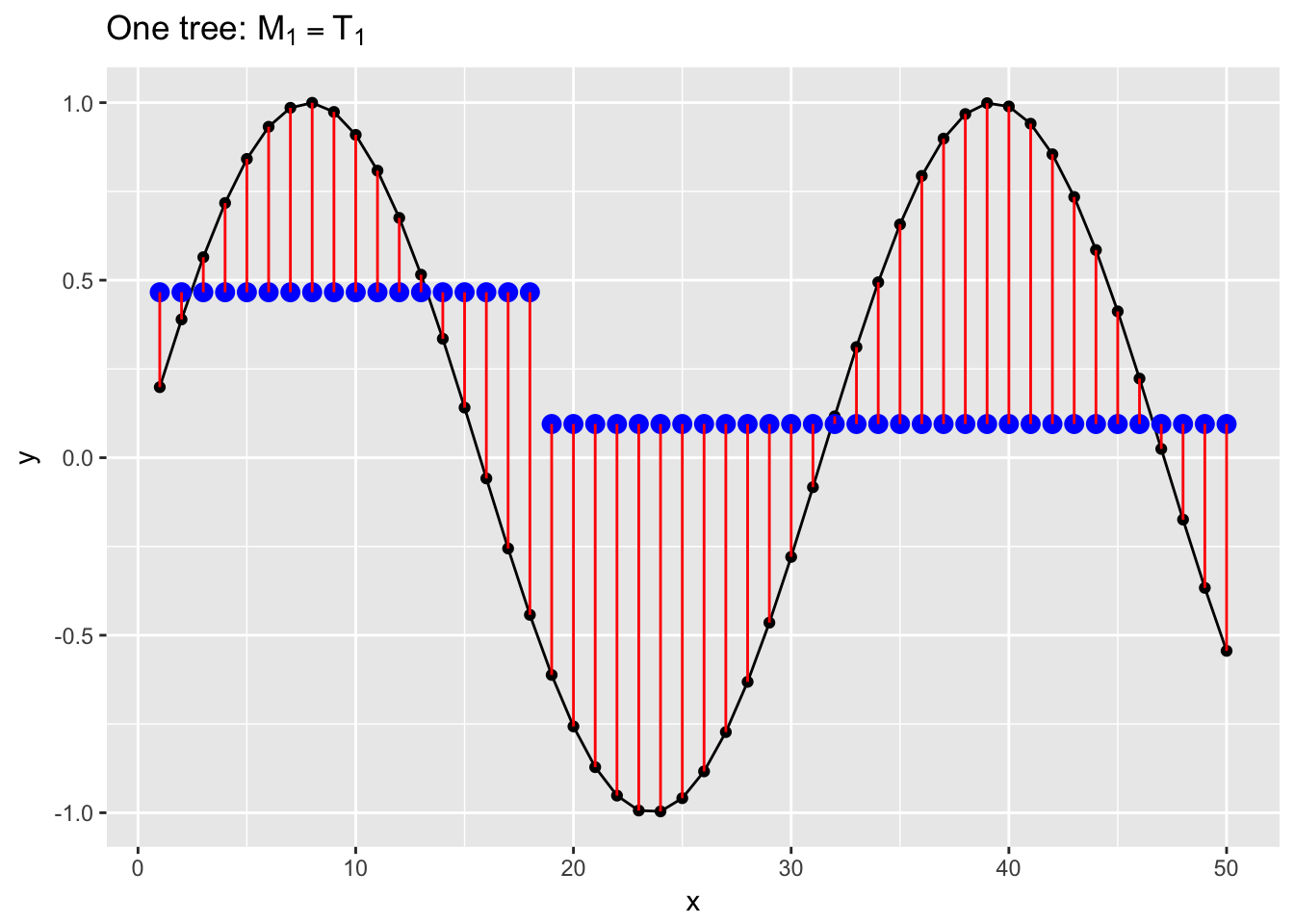
- Fit a shallow tree $T_1$ to the data: $M_1 = T_1$
How Gradient Boosting Works
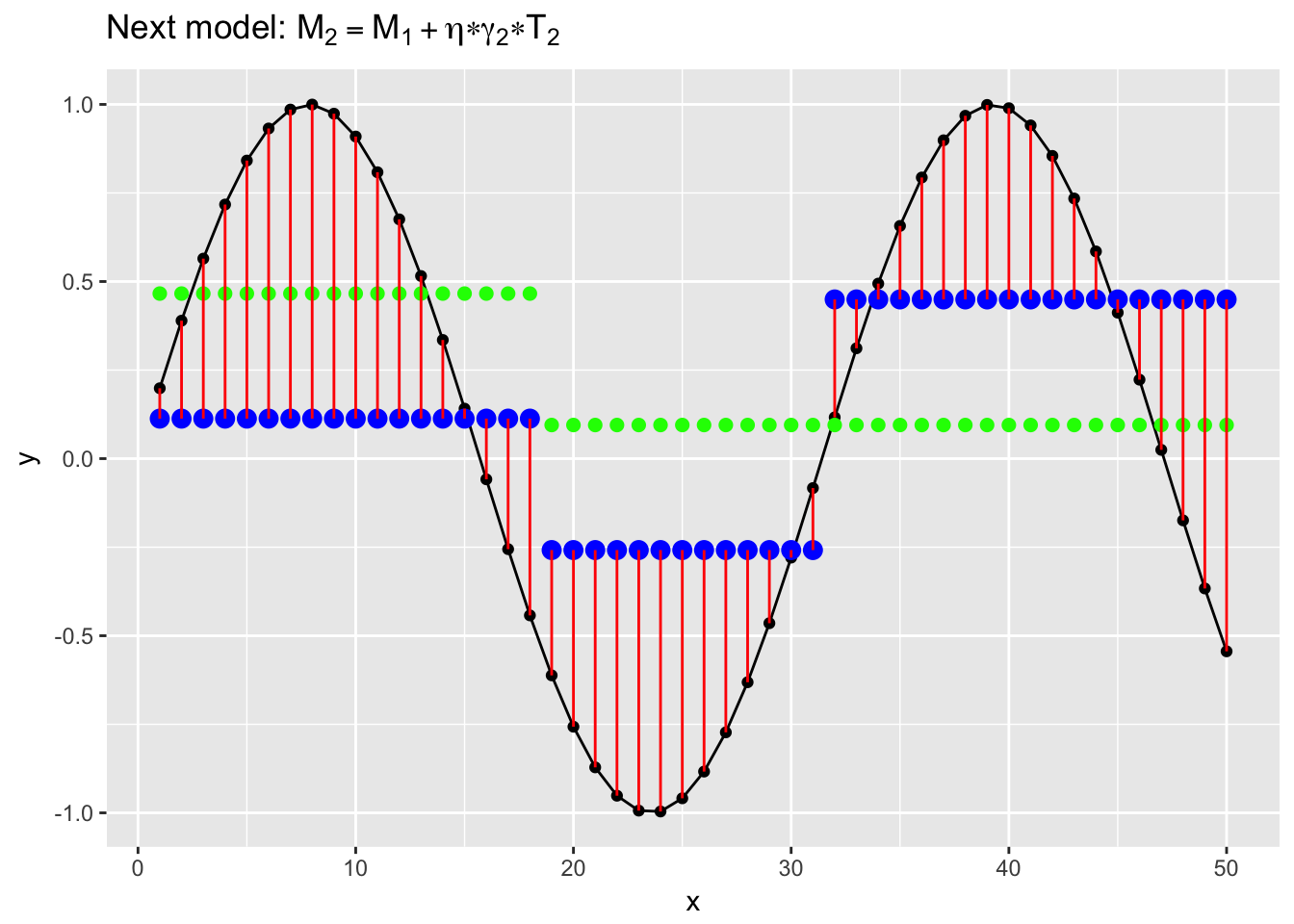
- Fit a shallow tree $T_1$ to the data: $M_1 = T_1$
- Fit a tree T_2 to the residuals. Find $\gamma$ such that $M_2 = M_1 + \gamma T_2$ is the best fit to data
How Gradient Boosting Works

Regularization: learning rate $\eta \in(0,1)$
$$ M_2 = M_1 + \eta \gamma T_2 $$
- Larger $\eta$: faster learning
- Smaller $\eta$: less risk of overfit
How Gradient Boosting Works
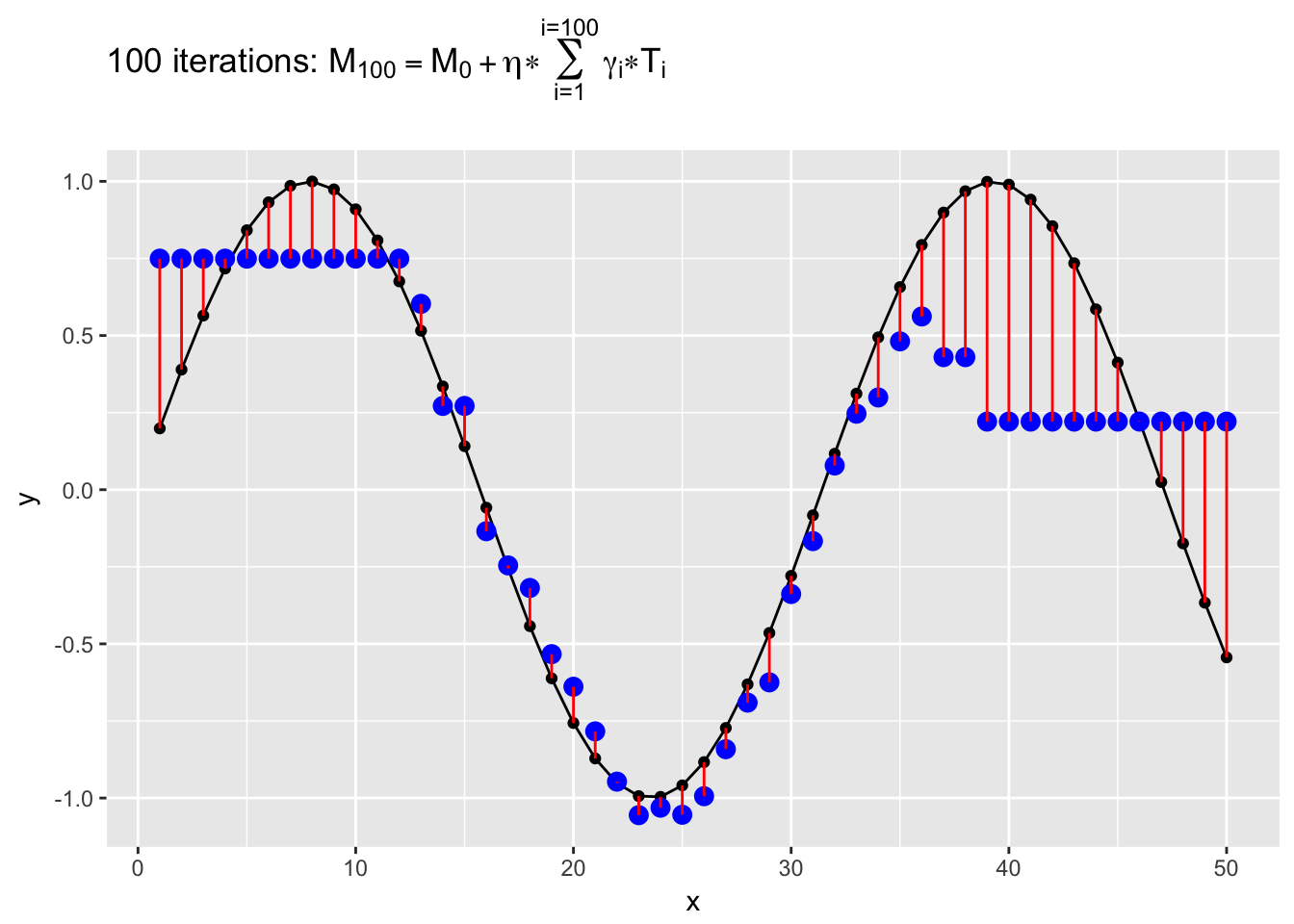
- Fit a shallow tree $T_1$ to the data
- $M_1 = T_1$
- Fit a tree T_2 to the residuals.
- $M_2 = M_1 + \eta \gamma_2 T_2$
- Repeat (2) until stopping condition met
Final Model:
$$ M = M_1 + \eta \sum \gamma_i T_i $$
Cross-validation to Guard Against Overfit
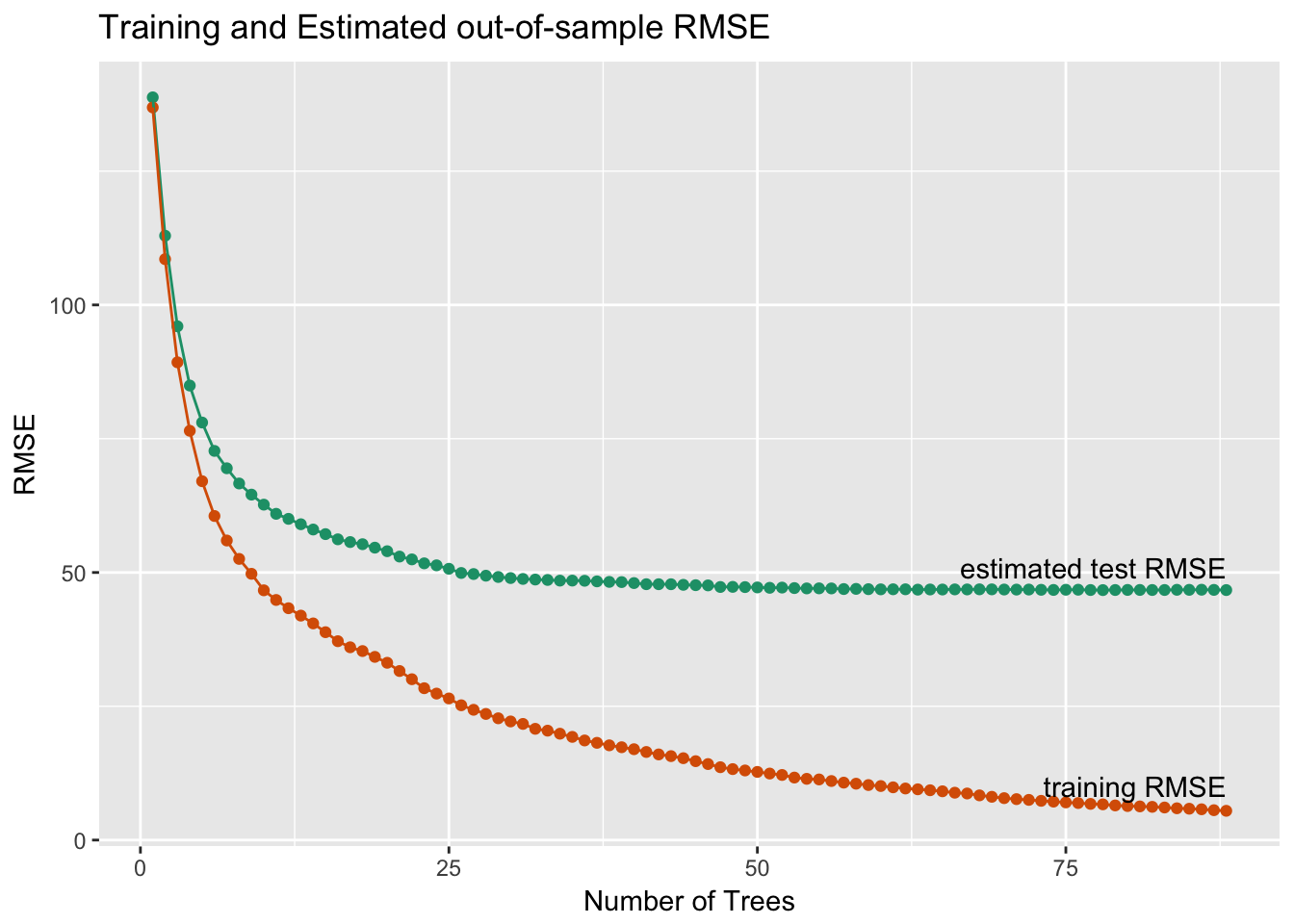
Training error keeps decreasing, but test error doesn't
Best Practice (with xgboost())
- Run
xgb.cv()with a large number of rounds (trees).
Best Practice (with xgboost())
- Run
xgb.cv()with a large number of rounds (trees). xgb.cv()$evaluation_log: records estimated RMSE for each round.- Find the number of trees that minimizes estimated RMSE: $n_{best}$
Best Practice (with xgboost())
- Run
xgb.cv()with a large number of rounds (trees). xgb.cv()$evaluation_log: records estimated RMSE for each round.- Find the number of trees that minimizes estimated RMSE: $n_{best}$
- Run
xgboost(), settingnrounds= $n_{best}$
Example: Bike Rental Model
First, prepare the data
treatplan <- designTreatmentsZ(bikesJan, vars)
newvars <- treatplan$scoreFrame %>%
filter(code %in% c("clean", "lev")) %>%
use_series(varName)
bikesJan.treat <- prepare(treatplan, bikesJan, varRestriction = newvars)
For xgboost():
- Input data:
as.matrix(bikesJan.treat) - Outcome:
bikesJan$cnt
Training a model with xgboost() / xgb.cv()
cv <- xgb.cv(data = as.matrix(bikesJan.treat), label = bikesJan$cnt,
objective = "reg:squarederror",
nrounds = 100, nfold = 5, eta = 0.3, max_depth = 6)
Key inputs to xgb.cv() and xgboost()
data: input data as matrix ;label: outcomeobjective: for regression -"reg:squarederror"nrounds: maximum number of trees to fiteta: learning ratemax_depth: maximum depth of individual treesnfold(xgb.cv()only): number of folds for cross validation
Find the Right Number of Trees
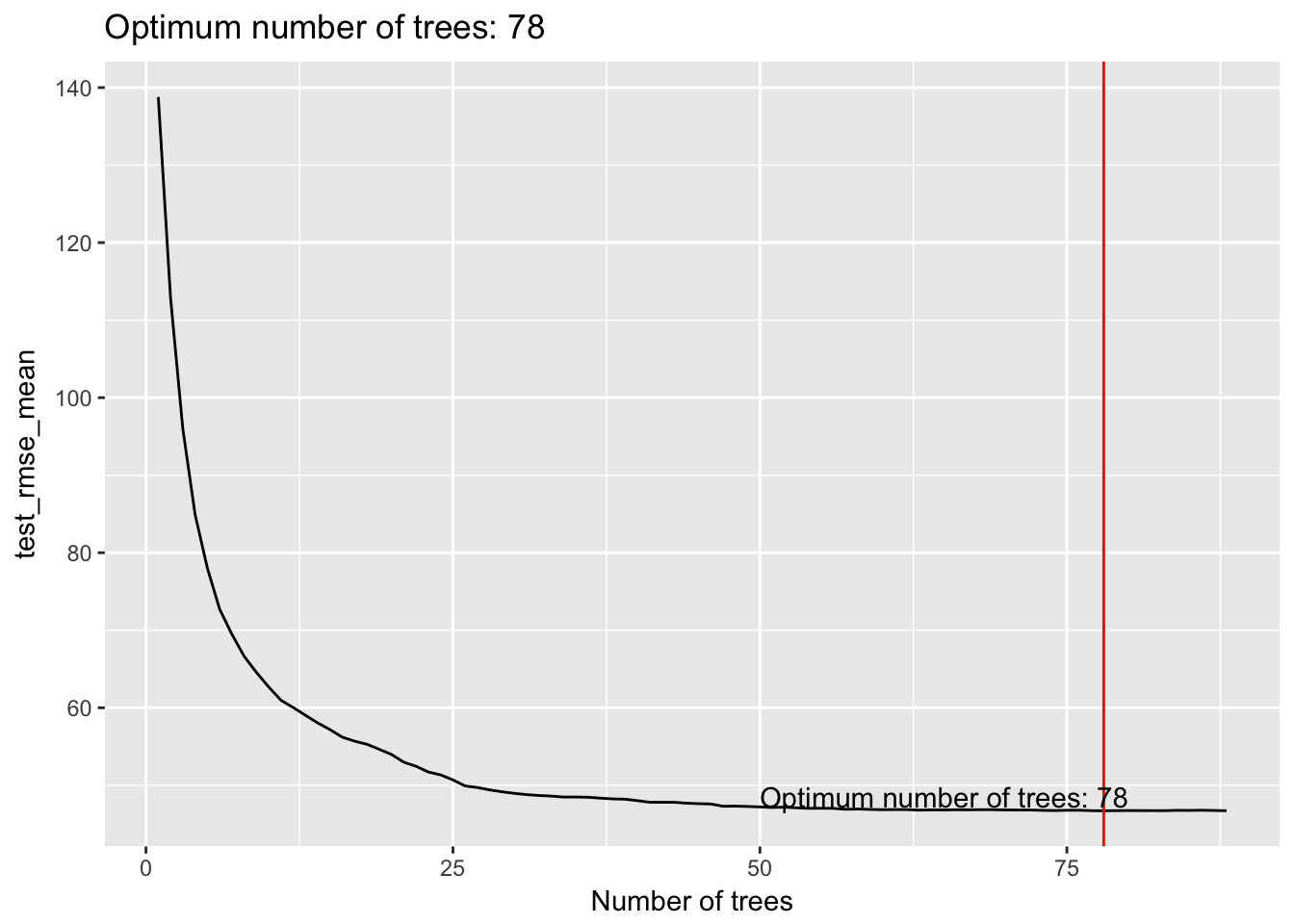
elog <- as.data.frame(cv$evaluation_log)
(nrounds <- which.min(elog$test_rmse_mean))
78
Run xgboost() for final model
nrounds <- 78
model <- xgboost(data = as.matrix(bikesJan.treat),
label = bikesJan$cnt,
nrounds = nrounds,
objective = "reg:squarederror",
eta = 0.3,
max_depth = 6)
Predict with an xgboost() model
Prepare February data, and predict
bikesFeb.treat <- prepare(treatplan, bikesFeb, varRestriction = newvars)
bikesFeb$pred <- predict(model, as.matrix(bikesFeb.treat))
Model performances on Febrary Data
| Model | RMSE |
|---|---|
| Quasipoisson | 69.3 |
| Random forests | 67.15 |
| Gradient Boosting | 54.0 |
Visualize the Results
Predictions vs. Actual Bike Rentals, February
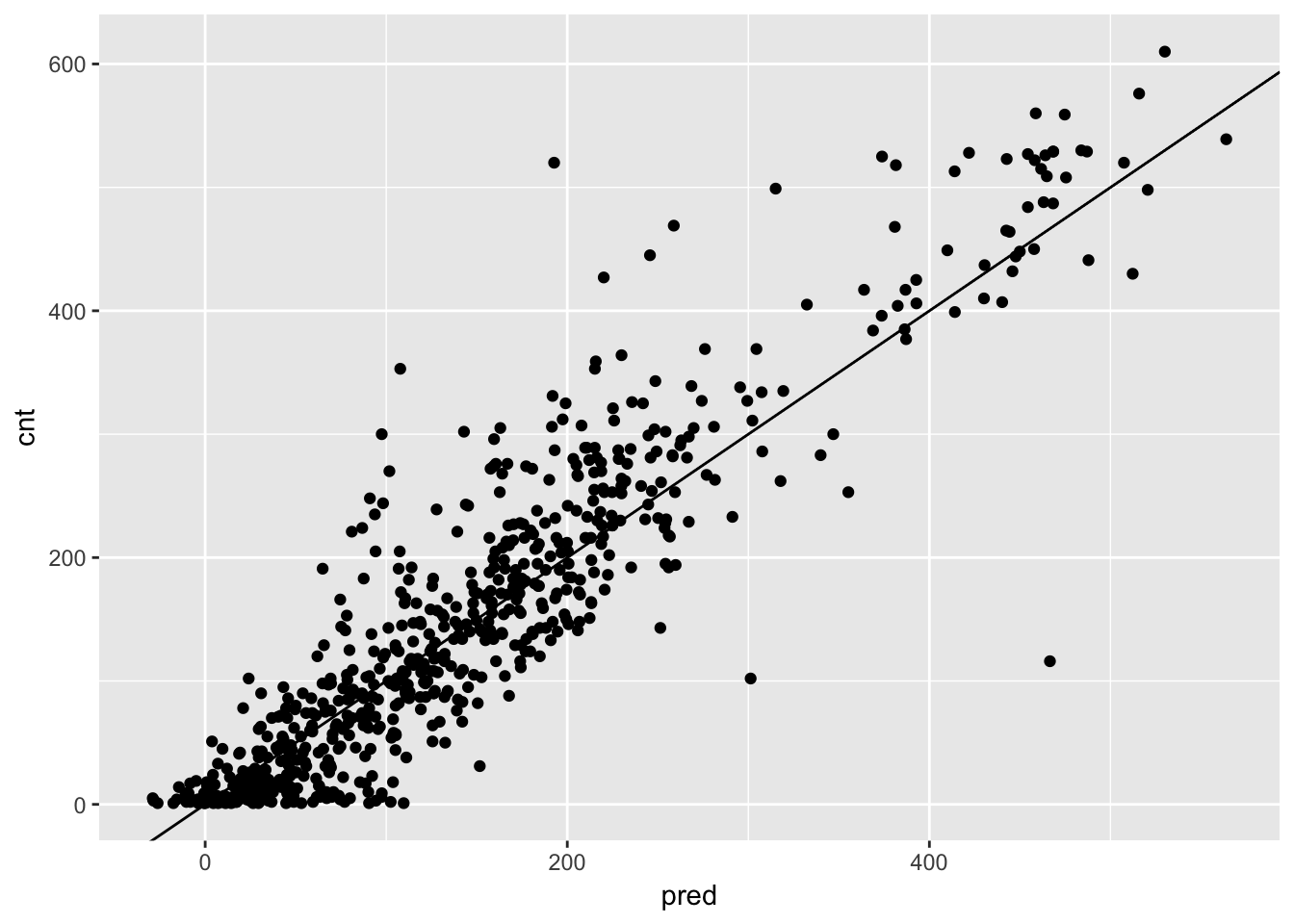
Predictions and Hourly Bike Rentals, February
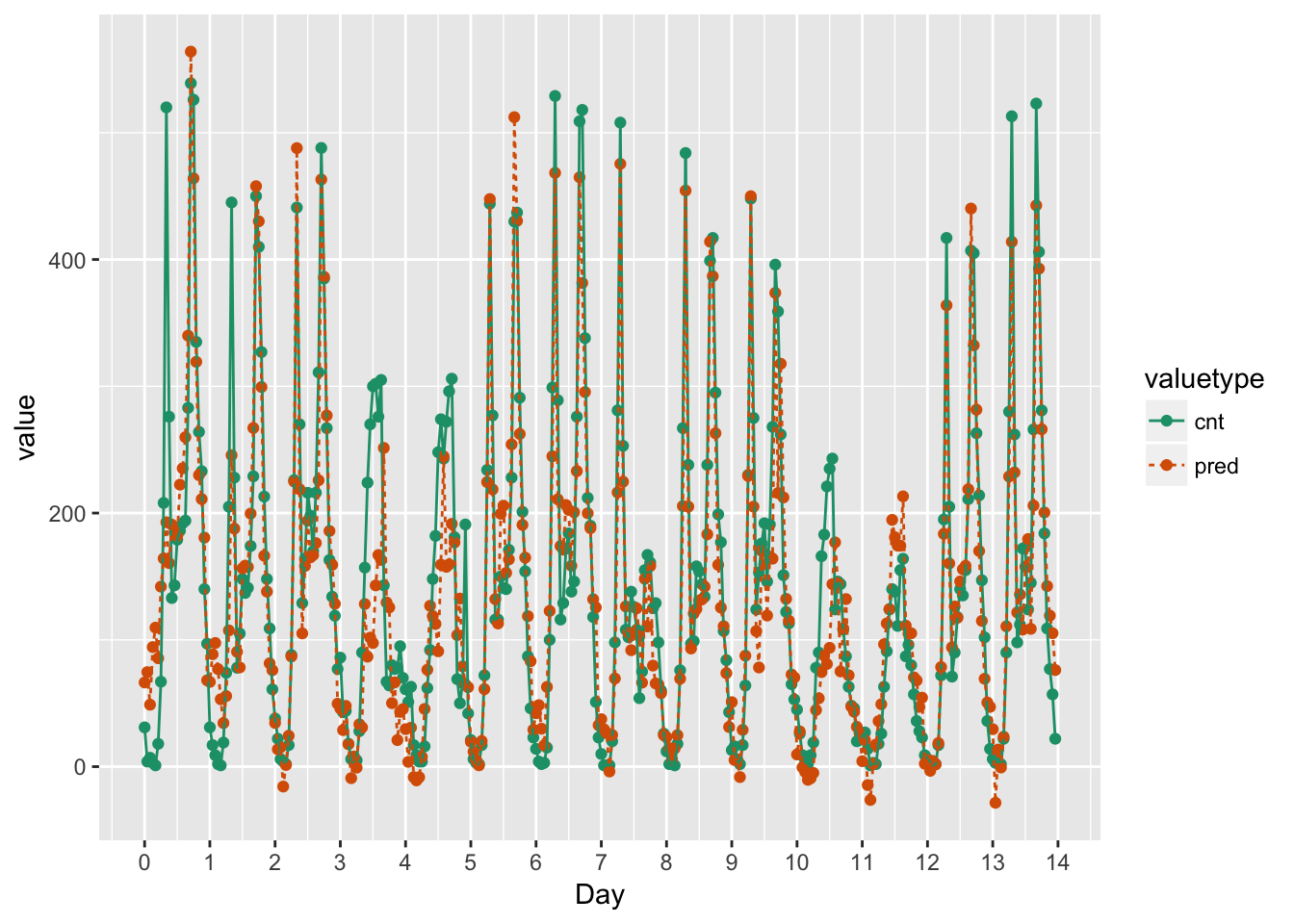
Let's practice!
Supervised Learning in R: Regression

